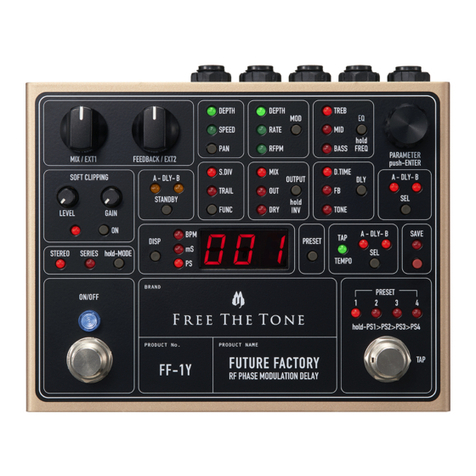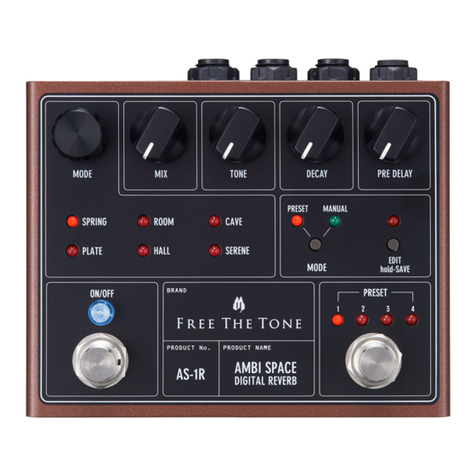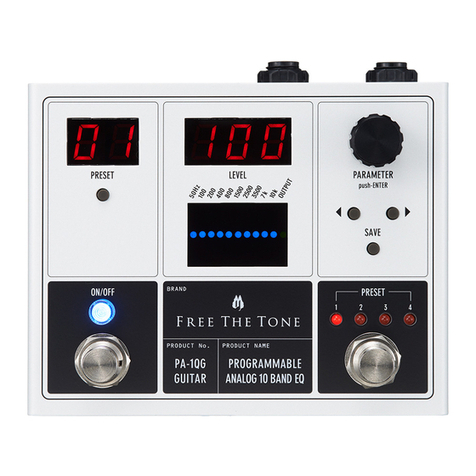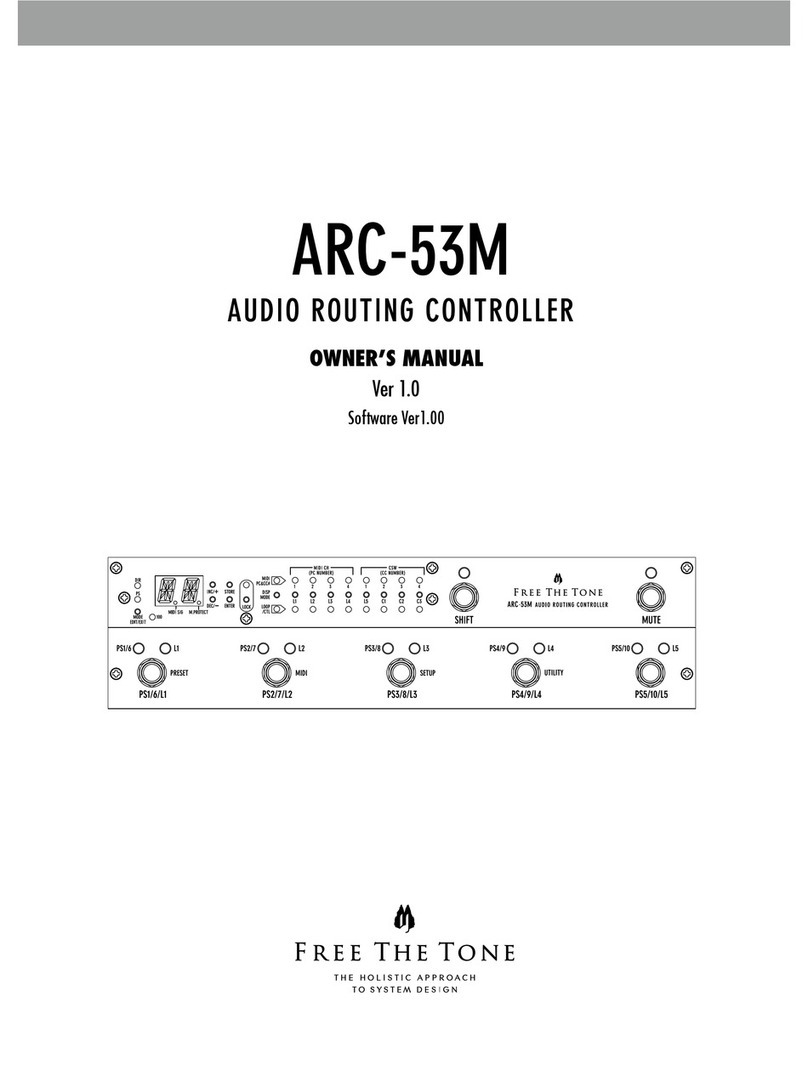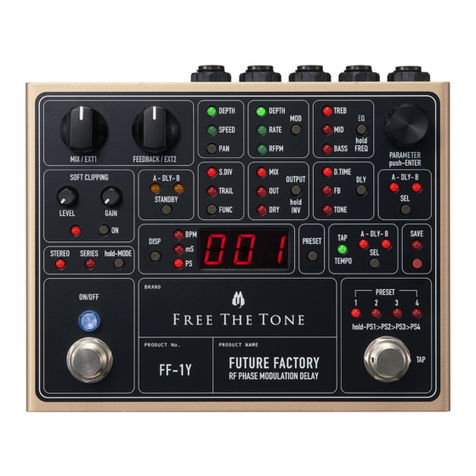Thank you for choosing a Free The Tone product. In order to take full advantage of the features and performance it
provides, please read this owner’s manual thoroughly, and keep it in a safe place for future reference.
• Never connect or disconnect plugs to/from the input/output terminals on the MC-3 when the external device
that drives speakers is powered. Doing so can cause noises and damage the speaker.
• Avoid applying excessive force to the footswitches, tact switches, and DIN connectors on the MC-3.
• If the unit malfunctions or behaves erratically, cease operation at once and contact your local dealer or Free The
Tone directly.
Handling Precautions
Contact the following for support and/or repair service.
Support/Service
SAFETY PRECAUTIONS
Precautions are identified by the two types of symbols below:
Be sure to read these precautions and the user’s manual before using this product.
Never try to disassemble, or modify the unit.
Stop using the unit if you notice smoke or a strange odor
coming from it and unplug the AC adapter from the outlet.
Never try to repair the unit or replace parts unless so
instructed by the user’s manual. For other repair or parts
replacement contact your local dealer or Free The Tone.
Never unplug the the AC adapter while your hands are wet.
Do not apply too much pressure or tension or place a heavy
object on the power cord. Doing so may damage the power
cord and create a danger of fire or electrical shock.
Turn off the unit and unplug the AC adapter from the outlet
and contact your local dealer or Free The Tone for repair in the
case of any of the following:
The power cord is damaged
Foregin objects (coins, pins, etc.) or liquid enter the unit.
The unit gets wet from rain or other liquid.
The unit is out of order.
Be careful of heat radiation from the unit.
Never cover the AC adapter with cloth or other objects.
Built-up heat can deform the case or cause a fire hazard.
This symbol indicates that a risk of serious personal injury or
material damage may result if precautions are ignored.
This symbol indicates that a risk of death or serious personal
injury may result if precautions are ignored.
Do not use or store the unit in environments where it will be
exposed to:
Extreme temperatures (direct rays of the sun, heat sources
such as radiators or stoves.)
High humidity or moisture.
Excessive dust or sand.
Excessive vibration or shock.
Whenever leaving the unit unattended for long periods, be
sure to unplug the AC adapter from the power source to
avoid creating a fire hazard.
Take care not to drop the unit, and do not subject it to
excessive pressure or weight.
Do not press the switches on the unit with a bare foot, or
unexpected injury may result.
Do not use solvents (such as benzine, paint thinner) on the
unit, since these may dull the finish or damage the surface.
WarningCaution
WarningCaution
2 3
